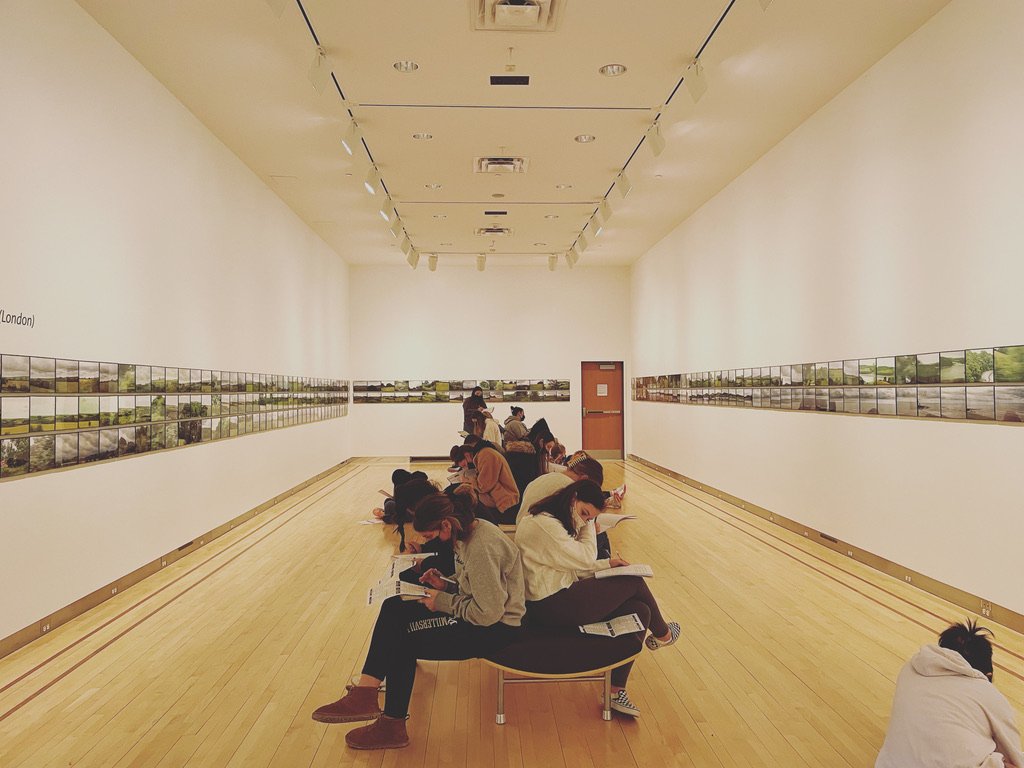Teaching Philosophy
My highest priority as an art educator is to help students see their full potential, and providing them with the tools necessary to be discerning critical thinkers and problem solvers. Teaching art allows for differentiated instruction, which can meet students at their level and style of learning, giving them the confidence to succeed. I believe no matter the grade level, a substantive art curriculum should have a balance of fine art, critical thinking, creative expression, art history, art criticism, and have the capability to make connections to other content areas, providing more holistic learning and deeper engagement.
Twenty years down the road, I want my students to understand, remember, and be able to utilize their individual creative process: how they see problems, brainstorm, ideate, and move those ideas into fruition within the context of the real world. In the art classroom, this type of learning can be approached at many different angles. Each year, while teaching art to Kindergarten to 5th grade students at Union Canal Elementary School, I also had the privilege of coaching a small group of fifth grade students in developing their own body of artwork which was personal to them and spoke to their talents and interests. Students worked in groups and individually to discern and apply their own creative process, creating a portfolio of exceptional work. Since we, as people, rarely work in a vacuum, I believe some of the most authentic learning experiences involve a balance of working with others as well as working alone within the context of the classroom. I also highly value the ability to create meaningful connections with students so the art room can be a safe place, and a place of joy.
While teaching Art Integration at Millersville University, I have gained greater understanding of the essential role which art can play in regular education classroom. Whether it is in the elementary classroom, high school, or higher education, I believe in my ability to teach real-world problem solving and critical thinking, while encouraging an appreciation for art as a whole. Through a holistic approach of teaching art, by making connections to and integrating other content areas, students can have an invaluable art educational experience.
References
Julia L. Hovanec, Ph.D.
Associate Professor of Art Education & Department Chairperson
Sharadin 416
Kutztown, PA 19530
(267) 327-3088 | hovanec@kutztown.edu
Sarah Brooks, Ph.D.
Coordinator – Secondary & K-12 Professional Development School & Associate Professor - Educational Foundations Department College of Education & Human Services
P.O. Box 1002, Millersville, PA 17551-0302
(717) 871-4872 | Sarah.Brooks@millersville.edu
Leslie Gates, Ph.D.
Professor of Art Education - Department of Art & Design
P.O. Box 1002, Millersville, PA 17551-0302
(717) 871-7257 | Leslie.Gates@millersville.edu
Tracie Clemens, Ed.D. (Retired)
Former Director of Elementary Education & Principal of Union Canal Elementary School - Cornwall Lebanon School District
(717) 644-7166 | r_clemens@comcast.net
Brett Lovern
Pastor of Worship & Arts
651 Lampeter Rd, Lancaster, PA 17602
(717) 201-1981 | pastorbrett@mission-church.com
